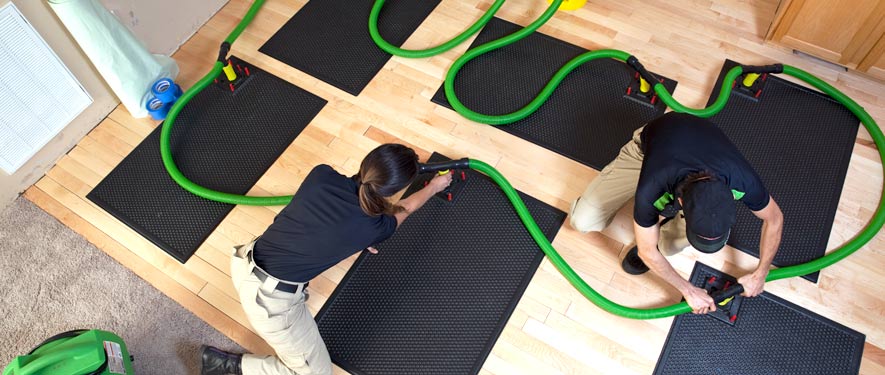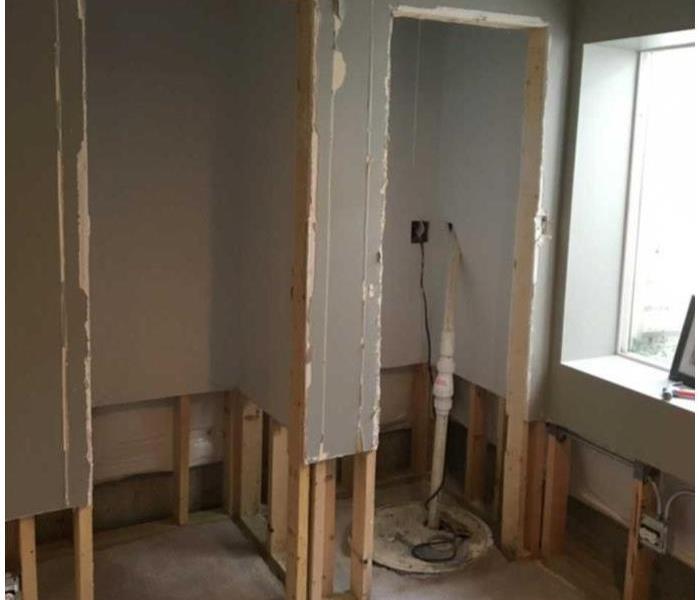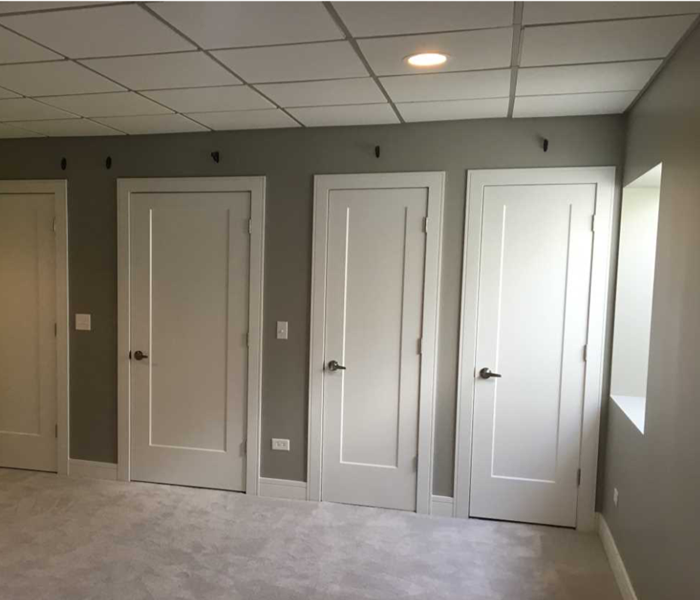
Step 4: Drying and Dehumidification
Our Water Damage Restoration Process
After the water extraction process the next step in the water restoration process is DRYING and DEHUMIDIFICATION. In the previous step that goal was removing the excess water. At this point things may visibly appear fine, but a quick inspection will reveal material is still wet to the touch, or wet beyond sight. Building materials retain water. Wood, drywall and flooring is porous is provides ample room for water and moisture. Left by itself, mold will quickly appear -- you don't want that and neither do we.
When it comes to drying and dehumidification, our SERVPRO of Elmhurst team is here to help.
Drying / Dehumidification
Our Professionals will use room measurements, temperature, and relative humidity to determine the optimal number of air movers and dehumidifiers to dry your home or business. We’ll carefully monitor the progress using moisture meters until the materials return to acceptable drying goals.
- Use Dehumidification Equipment
- Use Monitoring Equipment to Track Progress
Monitor Floor and Walls
We check the moisture levels to monitor the drying process.
- Monitor Floors
- Monitor Walls
Drying Equipment
- Industrial-grade dehumidifiers help prevent secondary water damage like swelling and warping of floors, walls, and furniture.
- High-speed air movers create airflow across walls, carpets, pads, and furniture, which accelerates the evaporation of moisture.





 24/7 Emergency Service
24/7 Emergency Service




